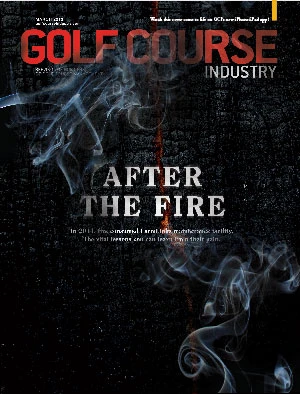 John Kaminski John Kaminski |
Those who know me know I’m pretty intense. As a kid I’d get into a lot of trouble at school. Despite this, I maintained high academic standards, played several sports and was involved in other activities. I remember receiving the Presidential Academic Achievement Award in elementary school and my principal stressing “this next recipient is an outstanding scholar, but definitely has fun doing it.” Just to round out the scholarly and athletic activities, I also was the one who, at 15, “borrowed” my Dad’s Corvette to drive my girlfriend home after school. As I was completing my Ph.D., I remember my mentor Dr. Dernoeden saying something to the effect of “You take on too much and finish too little.” I never took this as an insult. I just do things a little differently. My philosophy has been to throw 20 things against the wall and see what sticks. Maybe two or three ideas are good ones and get accomplished. I’ve always looked at those who focused on two things in the hopes one works out as underachievers. Therefore, I’m always on the move. This continued with me through my days at Maryland, as an assistant professor at UConn, and now in my position at Penn State. For those who follow me on Twitter (or one of the other social networks I post junk on), you know things haven’t slowed down. If I could sum up my early career, I would credit this “Go. Go. Go” philosophy to much of what I’ve accomplished so far. I work hard and place extraordinarily high expectations on myself and others within my “circle.” So what’s my point? The demands and expectations I put on myself and ultimately on those individuals, groups and associations around me have swayed my attention and efforts in the wrong direction. Instead of focusing on my own 20 projects (in hopes two or three will stick), I have allowed the projects and work of others to infiltrate my circle of control. And so we’ve come to the story of the “red circle of control.” At the most recent Golf Industry Show, staff members who I highly respect (let’s call them Sarah and Karen) spent about 30 minutes of their busy day listening to me complain about things that were festering in my mind. After some time, Sarah looked up at an architectural detail in a convention center archway – a red circle with what appeared to be sun rays extending out of it – and said, “Do you see that red circle? That’s you. Do you see all of the lines extending out of that red circle? That’s everyone else. Focus on the circle. That’s the only thing you can control.” In typical Kaminski fashion, I couldn’t let it sink in or conceptualize the full meaning and instead got into another 30 minutes of philosophical discussion about the interpretation of the circles and its rays. The story bounced back and forth between the “circle of control” and the “circle of influence” and their differences. Since San Diego I’ve contemplated this “red circle of control” and the positive impact it could have on my professional and personal goals. The ability to focus on what you “can” control versus those things which you want to “try” to control is significant. For someone who manages things the way I do, however, it’s not easy to ignore the things around me. In San Diego, I expressed my concern that focusing on the “red circle” would mean giving up the desire to contribute to an entire industry. I distinctly felt focusing solely on me would equate to not caring about the big picture. I’ve now come to the realization that I’m not as important as I’d once thought I was. It’s not my job – or even position – to force my ideas on an entire industry in hopes for change. Focus on the circle. I’ve also realized focusing on what I can control doesn’t mean I won’t have an impact on advancing an industry. Considering the time I spend on projects and activities, pulling back and focusing on what I can control could result in a significant improvement in my own productivity. Maybe I could throw 30 things at the wall and see four or five of them to completion. Maybe I’m out on a limb with this, but I doubt it. I wonder if we all focused more on our own red circles would our careers, families and industry ultimately be better off for it? As always, John encourages reader comments. Share your #redcircle stories with him on Twitter (@johnkaminski). |
Get curated news on YOUR industry.
Enter your email to receive our newsletters.
Explore the March 2013 Issue
Check out more from this issue and find your next story to read.
Latest from Golf Course Industry
- Advanced Turf Solutions’ Scott Lund expands role
- South Carolina’s Tidewater Golf Club completes renovation project
- SePRO to host webinar on plant growth regulators
- Turfco introduces riding applicator
- From the publisher’s pen: The golf guilt trip
- Bob Farren lands Carolinas GCSA highest honor
- Architect Brian Curley breaks ground on new First Tee venue
- Turfco unveils new fairway topdresser and material handler





